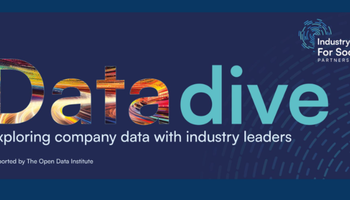
As technology continues to advance, disparities in access to data and information persist, creating a digital divide that hinders social progress and economic development. The data divide focuses on access to data, rather than access to technology. Ensuring that everyone is able to access and use data effectively is critical for empowering people to make better decisions and create equitable outcomes for society.
Microsoft has been working to bridge the data divide since 2020, focusing on increasing the publication and use of data. The ODI has partnered with Microsoft over the past four years to support its efforts to help close the data divide by driving the opening up and sharing of more data, to unlock value, share expertise, and make data more useful for all. We’ve worked on a variety of projects connected to bridging the data divide together, ranging from convening organisations which steward open data to help others address a range of social, environmental, and economic challenges, to supporting effective open data publishing for social good through the creation of a toolkit. In the fourth year of our partnership with Microsoft, we are investigating how new conversational generative AI tools can support bridging the data divide by enabling access to data.
Closing the data divide is of particular importance to the world of work. In the 21st century, every organisation is a data organisation and should be thinking about how it uses data as well as its role in wider data ecosystems. Research from 2022 suggests that 70% of employees are expected to work heavily with data by 2025, an increase from 40% in 2018. Working with data is becoming a crucial part of the majority of jobs of today and in the future.
For any worker who aims to draw insights from data, the development of generative AI models presents an opportunity to enable better use of data. Generative AI models have the potential to facilitate easier access to data, as well as help users with data comprehension, analysis, visualisation and decision-making, which makes generative AI applications particularly useful for individuals who may lack technical expertise. People can interact with many generative AI models via prompting, a written command by the user, which means interactions are more conversational and less technical than other tools. While the opportunity with generative AI is readily becoming more apparent, the feasibility and limitations of applying these tools to the workplace are not yet widely understood. For example, assessing factors that can lead to hallucinations or a lack of accuracy.
This research seeks to explore the potential of generative AI in closing the data divide, particularly in regards to the publishing and use of data. This research found there to be a lot of excitement around the potential of generative AI tools to close the data divide - however for many of the tools explored in this report, there are also considerations to their daily use, especially for those with limited data skills. Generating code and analysing data are two of the areas with the most excitement and potential, likely due to the utility of the tools for developers today. This research found that generative AI works best with a human in control. Human expertise is still required to maximise the benefits of these tools, while minimising their drawbacks. Going forward people will need to adapt and learn to work more effectively with generative AI tools as a "copilot" to the human user to realise their full potential, for example, by learning prompting strategies.
This research is part of the fourth year of our partnership with Microsoft, which included hosting a data prompting workshop to understand how these AI tools could work in practice. If you’d like to learn more about our work on generative AI or the digital divide, please contact [email protected].


